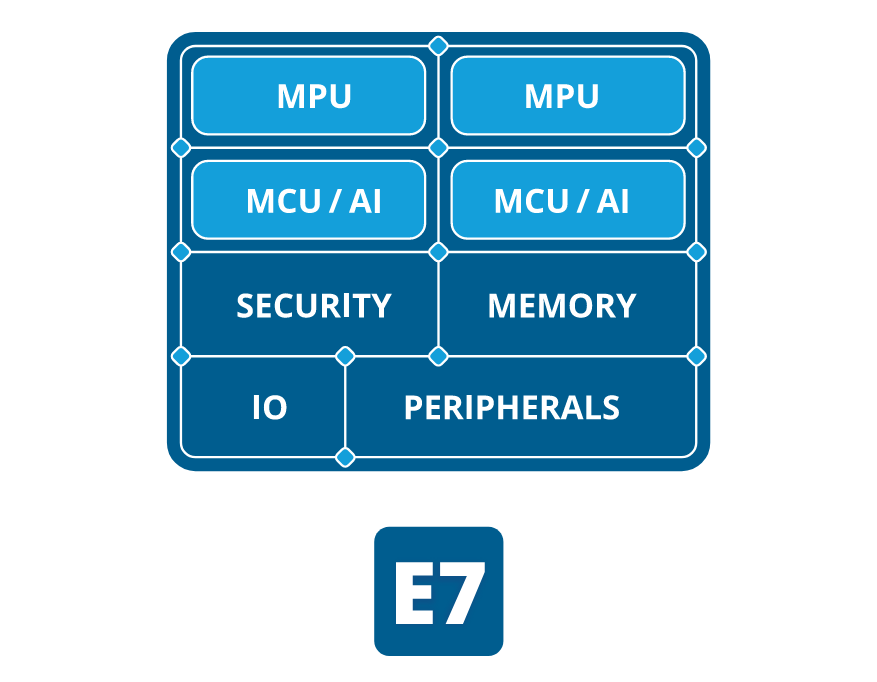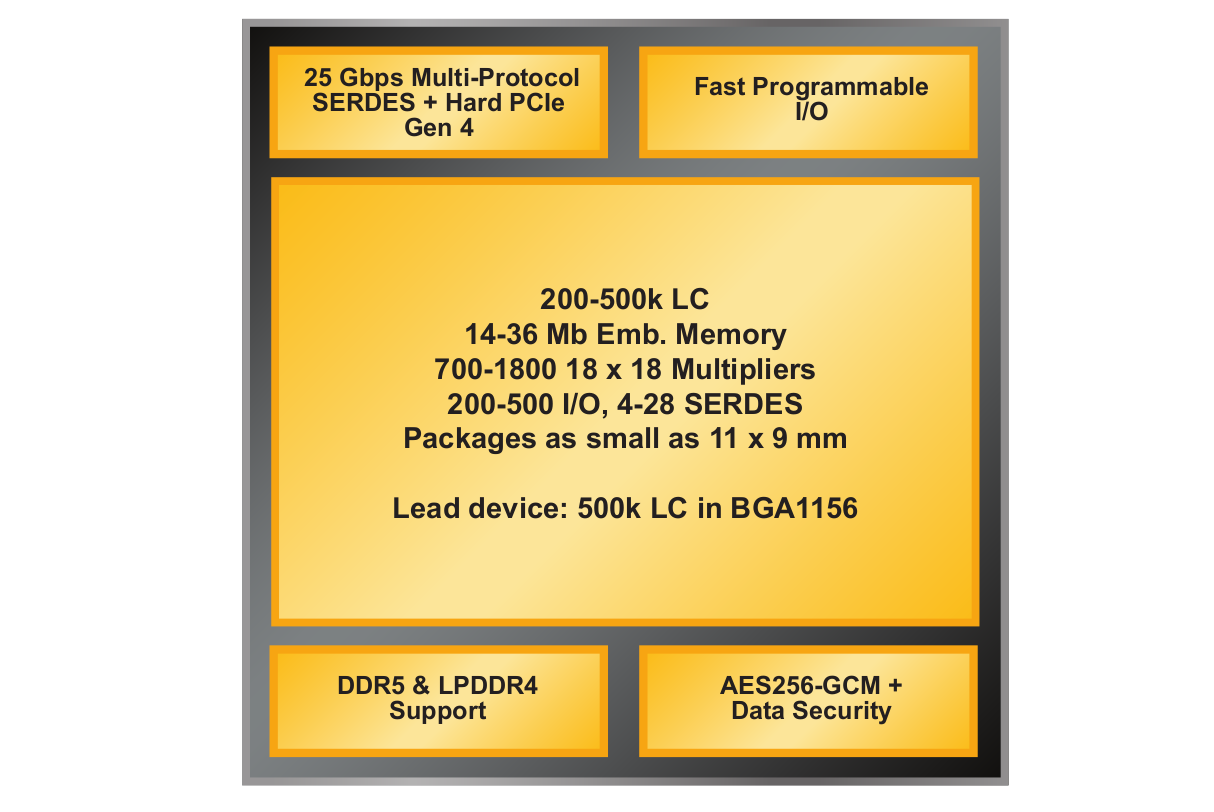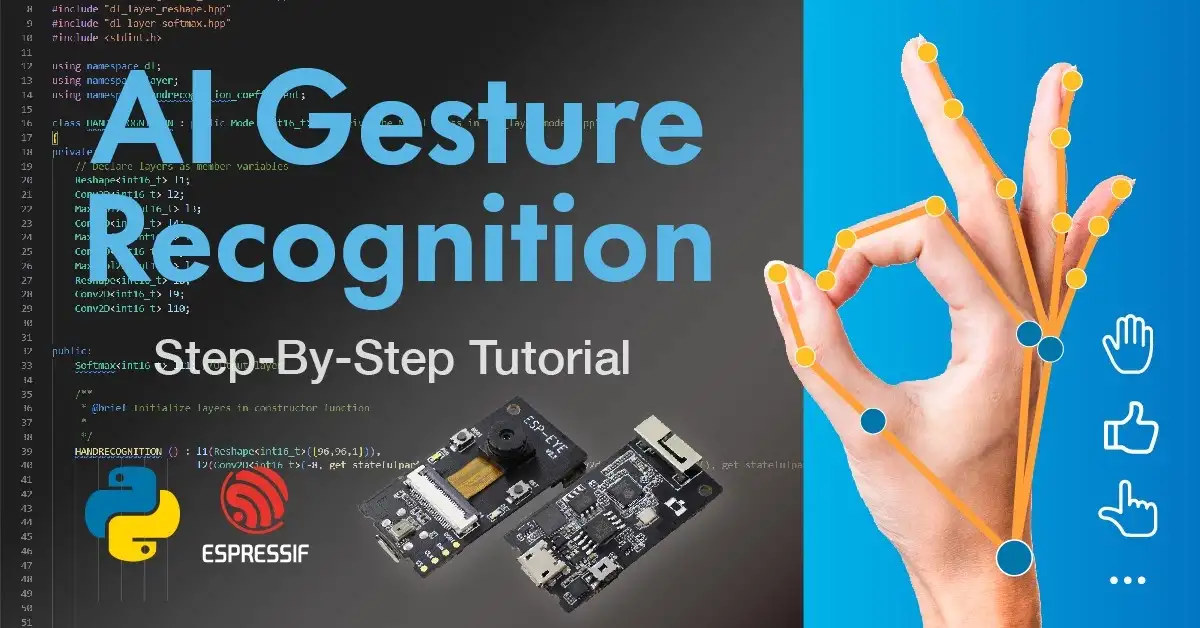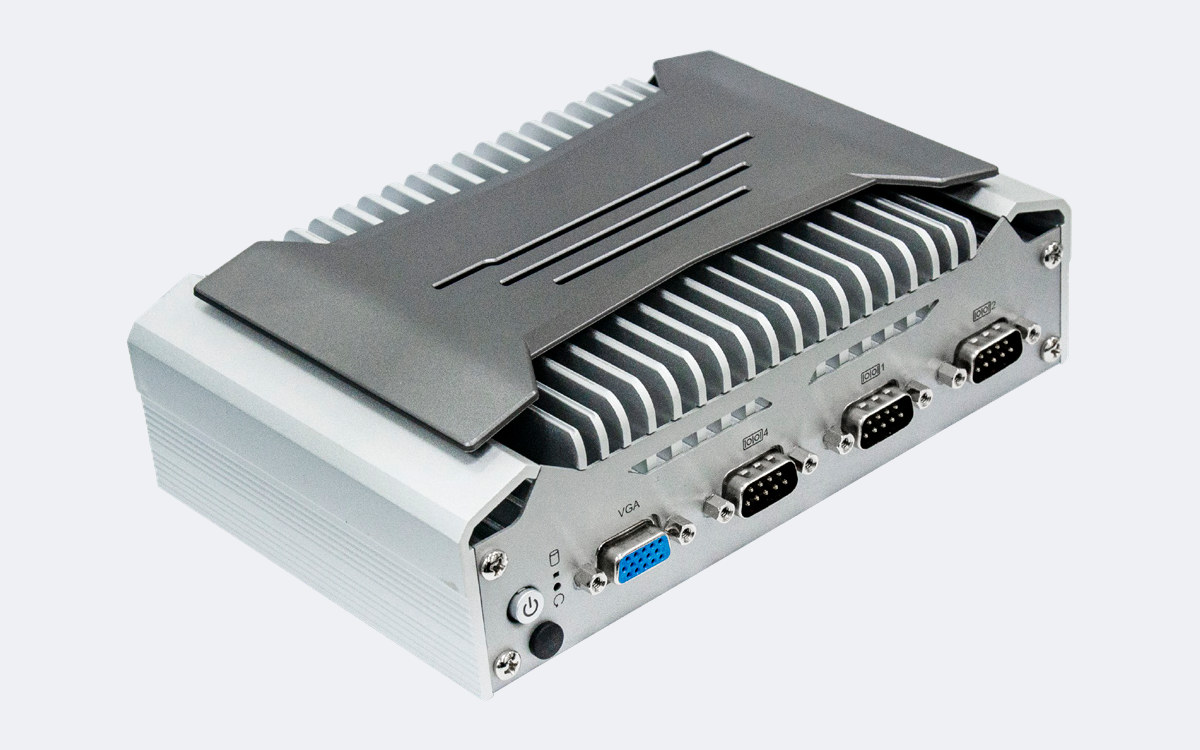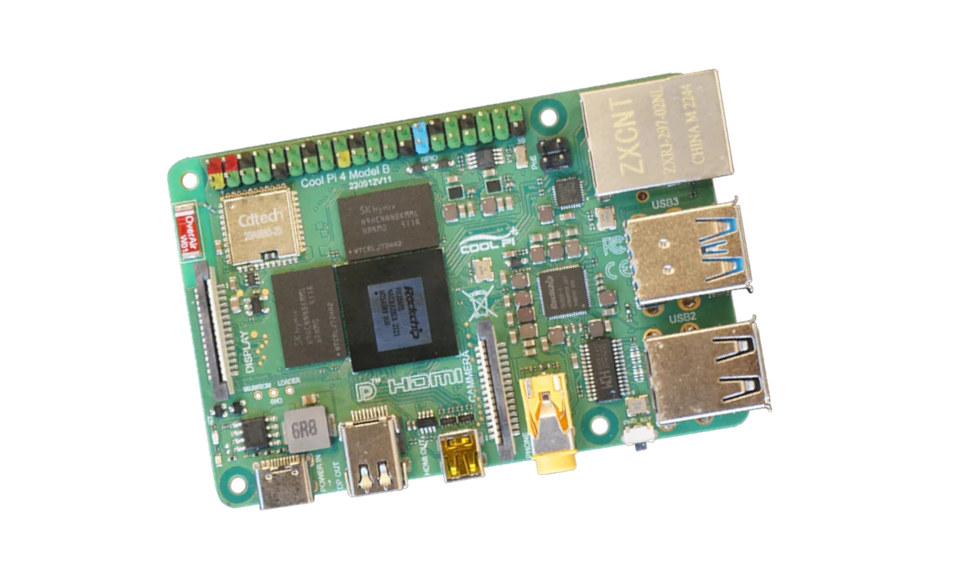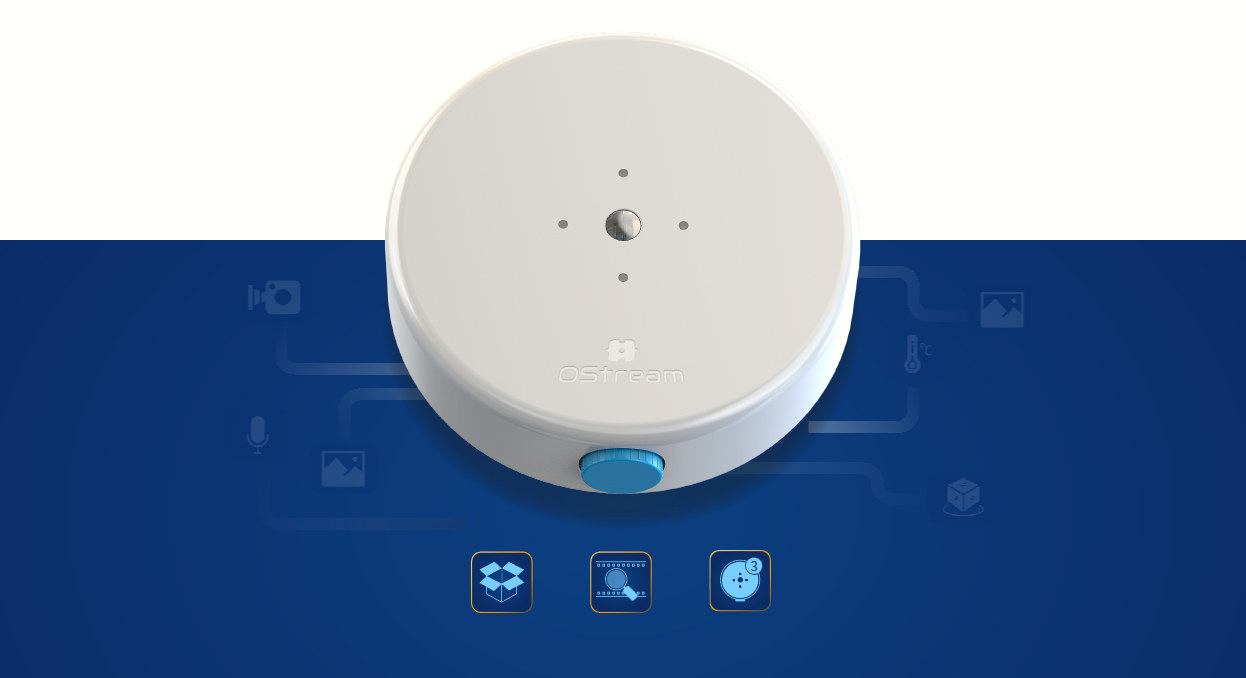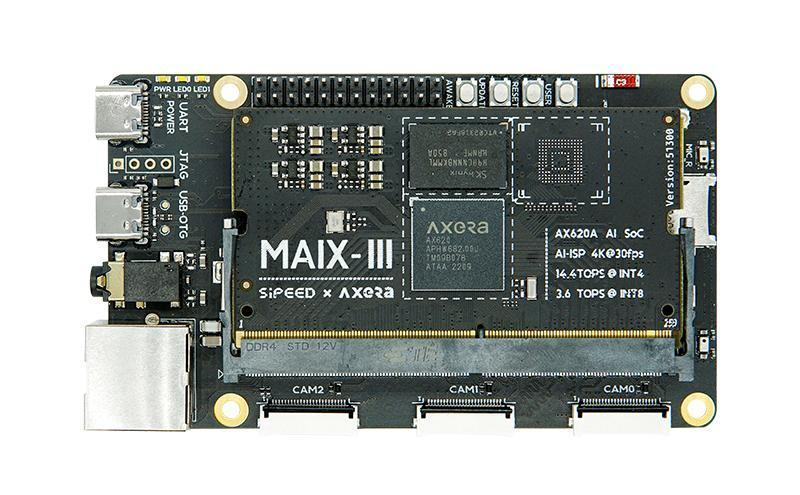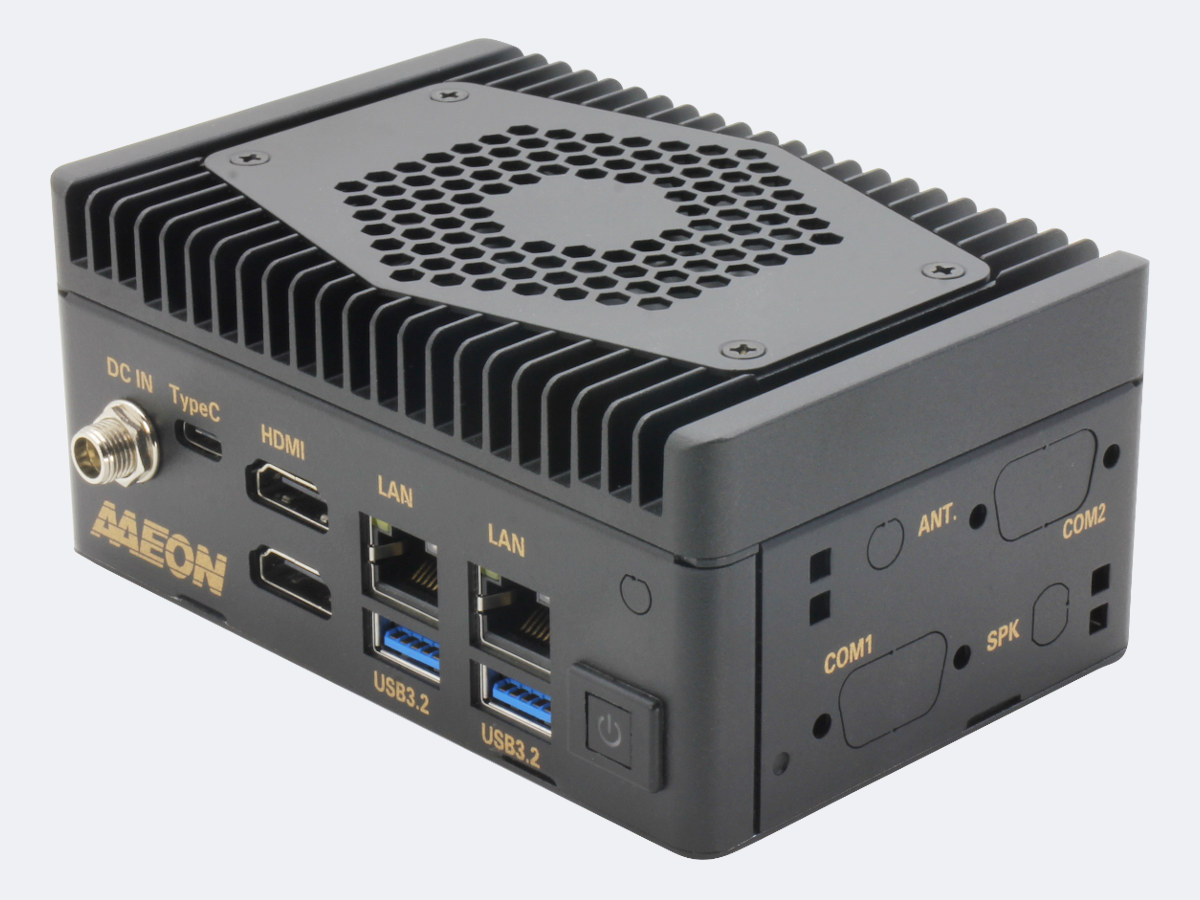Alif Semiconductor’s Ensemble is a family of processors and microcontrollers based on Arm Cortex-A32 and/or Cortex-M55 cores, one or two Ethos-U55 AI accelerators, and plenty of I/Os and peripherals. Four versions are available as follows: Alif E1 single-core MCU with one Cortex-M55 core @ 160 MHz, one Ethos U55 microNPU with 128 MAC/c Alif E3 dual-core MCU with one Cortex-M55 core @ 400 MHz, one Cortex-M55 core @ 160 MHz, one Ethos U55 with 256 MAC/c, one Ethos U55 with 128MAC/c Alif E5 triple-core fusion processor with one Cortex-A32 cores @ 800 MHz, one Cortex-M55 core @ 400 MHz, one Cortex-M55 core @ 160 MHz, one Ethos U55 with 256 MAC/c, one Ethos U55 with 128MAC/c Alif E7 quad-core fusion processor with two Cortex-A32 cores @ 800 MHz, one Cortex-M55 core @ 400 MHz, one Cortex-M55 core @ 160 MHz, one Ethos U55 with 256 MAC/c, one Ethos U55 with […]
Lattice Avant mid-range FPGA platform features up to 500K logic cells, 25 Gbps SERDES, Hard PCIe Gen4
Lattice Avant is a new low-power and small form factor mid-range FPGA platform, manufactured with a 16nm FinFET process, and equipped with 25 Gb/s SERDES, hardened PCI Express, external memory PHY interfaces, a high DSP count, and a security engine. Lattice Semi is better known for its entry-level FPGAs such as the iCE40 which is popular in the community thanks to low-cost hardware and support for open-source tools, but the Avant platform marks the company’s entry into the mid-range FPGA market, defined by chips with 100k to 500k logic cells (LCs). Lattice Avant highlights: FPGA fabric – 200K to 500K logic cells up to 350 MHz DSP – 700 to 1,8000 18×18 multipliers @ up to 650 MHz to support the latest AI algorithms Memory 14-36 Mbit embedded memory up to 650 MHz DDR3L/DDR4/LPDDR4 and DDR5 support I/Os 4x to 28x 25 Gbps multi-protocol SERDES Hard PCIe Gen4 200 to […]
Hand Gesture Recognition on ESP32-S3 with the ESP-DL library
Ali Hassan Shah has deployed a deep learning model for hand gesture recognition on the ESP32-S3-EYE board using the ESP-DL library and achieved AI-powered hand recognition with a 0.7-second latency on the ESP32-S3 camera board. Last year, Espressif released the ESP-DL library for the ESP32-S3 microcontroller with AI vector extensions, as well as ESP32 and ESP32-S2, along with a face detection demo that ran much faster on the ESP32-S3. Ali rolled out his own solution for AI gesture recognition and provided a step-by-step tutorial along the way. The main steps to deploying a custom model with the ESP-DL library include: Model Development that involves Getting or creating datasets. In this case, downloaded from Kaggle with 6 gestures namely Palm, I, Thumb, Index, Ok, and C. Testing, training, and calibrating the datasets Building a (CNN) Model Training a Model Saving a Model to the Hierarchical Data format (.h5) Converting the H.5 […]
DFI EC70A-TGU embedded computer promises long-term support until 2035 (at least)
Some industries require long-term support of hardware, and DFI’s EC70A-TGU rugged embedded computer could fit the bill as the Tiger Lake IOTG processor used in this model has a 15-Year CPU life cycle guaranteeing availability until Q3 2035. The fanless computer is equipped with 8GB RAM, supports M.2 NVMe SSD storage, also well M.2 expansion slots for 5G modules, features HDMI and VGA video output, four serial DB3 ports, and offers up to four Ethernet ports and up to six USB ports through three SKUs with a different number of USB and Ethernet ports. DFI EC70A-TGU specifications: Tiger Lake UP3 “IoTG” SoC (one or the other) @ 1.5GHz to 4.4GHz depending on SKU Embedded Intel Core i7-1185G7E quad-core processor with Iris Xe graphics; TDP: 28W Intel Core i5-1145G7E quad-core processor with Iris Xe graphics; TDP: 28W Intel Core i3-1115G4E dual-core processor with Intel UHD graphics; TDP: 28W Industrial-grade Intel Core […]
Cool Pi 4 Model B – A much faster alternative to Raspberry Pi 4 SBC
Cool Pi 4 Model B is a powerful alternative to Raspberry Pi 4 SBC with mostly the same form factor and interfaces but equipped with a Rockchip RK3588S octa-core Cortex-A76/A55 processor that will run circles around the Broadcom BCM2711 SoC found in the Raspberry Pi board. We’ve already reviewed Rockchip RK3588/RK3588S single board computers and mini PC such as Rock 5B, Khadas Edge2 Pro, and Mekotronics R58, and we were impressed by the performance, but if you prefer to have such a board in Raspberry Pi 4 form factor, then the Cool Pi 4 Model B might be for you. Cool Pi 4 Model B specifications: SoC – Rockchip RK3588S octa-core processor with 4x Cortex-A76 cores @ up to 2.4 GHz, 4x Cortex-A55 cores, an Arm Mali-G610 GPU with OpenGL ES 3.2, OpenCL 2.2, and Vulkan 1.1 support, 8Kp60 video decoder for H.265/AVS2/VP9/H.264/AV1 codecs, 8Kp30 video encoder, and a 6 […]
Arducam OCam AI camera adds context to video streams in real-time with the PhysicO platform
Arducam OCam, whose name stands for Object Camera, is an AI camera with 3 TOPS of AI performance and designed to work with OStream‘s PhysicO Edge AI media platform that adds context to MP4 video streams in real-time. The camera supports resolutions from QVGA to 2K, takes USB or PoE power, comes with a drag-and-drop AI pipeline for easy programming/configuration, and is also compatible with common AI tools such as TensorFlow, PyTorch, Edge Impulse, and others. Arducam OCam specifications: Resolution – QVGA up to 2K Frame Rate – Up to 60 fps FoV – 80° Audio – Dual beamforming AI processing power – Up to 3 TOPS Power Supply 5V via USB PoE Power Consumption – Up to 5 Watts Dimensions – 10 cm Φ x 3 cm Weight – 400 grams As I understand it, the AI pipeline – named ObjectAgent – runs on the camera itself, and adds […]
Sipeed Maix-III devkit features AXERA AX620A SoC for AI vision applications
Sipeed Maix-III development kit is composed of a core board equipped with AXERA AX620A AI processor and a carrier board exposing several interfaces such as Ethernet, USB, and camera connectors. resources. As noted in our earlier article about the AXERA AX620A chip, it is a quad-core Arm Cortex-A7 chip with an NPU offering a maximum of 14.4 TOPS @ INT4 or 3.6TOPSs @ INT8, and as such, this development board mainly targets AI vision applications. The board is an upgrade to the earlier Speed Maix II with an Allwinner V831 processor. Thanks to the low power consumption of the AXERA AX620A SoC, the Sipeed Maix-III board can be powered directly through its USB port as the system consumers 5W (5V@1A) with the carrier board, the system-on-module, WiFi, Ethernet, a camera, and a 5-inch display. Using the display does not require am additional heatsink or fan, nor does it require an […]
AMD Ryzen Embedded V2516/V2718 mini PC supports three 4K displays, 2.5GbE, RS232/RS422/RS485
AAEON PICO-V2K4-SEMI mini PC, powered by an AMD Ryzen Embedded V2516 or V2718 processor, can drive up to three 4K displays, offers 2.5GbE and GbE networking, several USB 3.2 ports, as well as two optional COM ports supporting RS232, RS422, and RS485. The first mini PC from the company featuring AMD Ryzen V2000 Series processors also comes with up to 32GB RAM, a 64GB NVMe SSD, as well as M.2 and mPCIe sockets for expansion, and its compact form factor makes it suitable for edge computing, embedded gaming, and image processing applications. PICO-V2K4-SEMI specifications: AMD Ryzen Embedded V2000 processor (one or the other) Ryzen V2718 octa-core/16-thread processor @ up to 1.7-4.15 GHz (Turbo) with Radeon RX Vega 7 GPU; TDP: 10-25W Ryzen V2516 hexa-core/12-thread processor @ up to 2.1-3.95 GHz (Turbo) with Radeon RX Vega 6 GPU; TDP: 10-25W System Memory – 8GB to 32GB LPDDR4x 3733 MHz Storage Up […]


